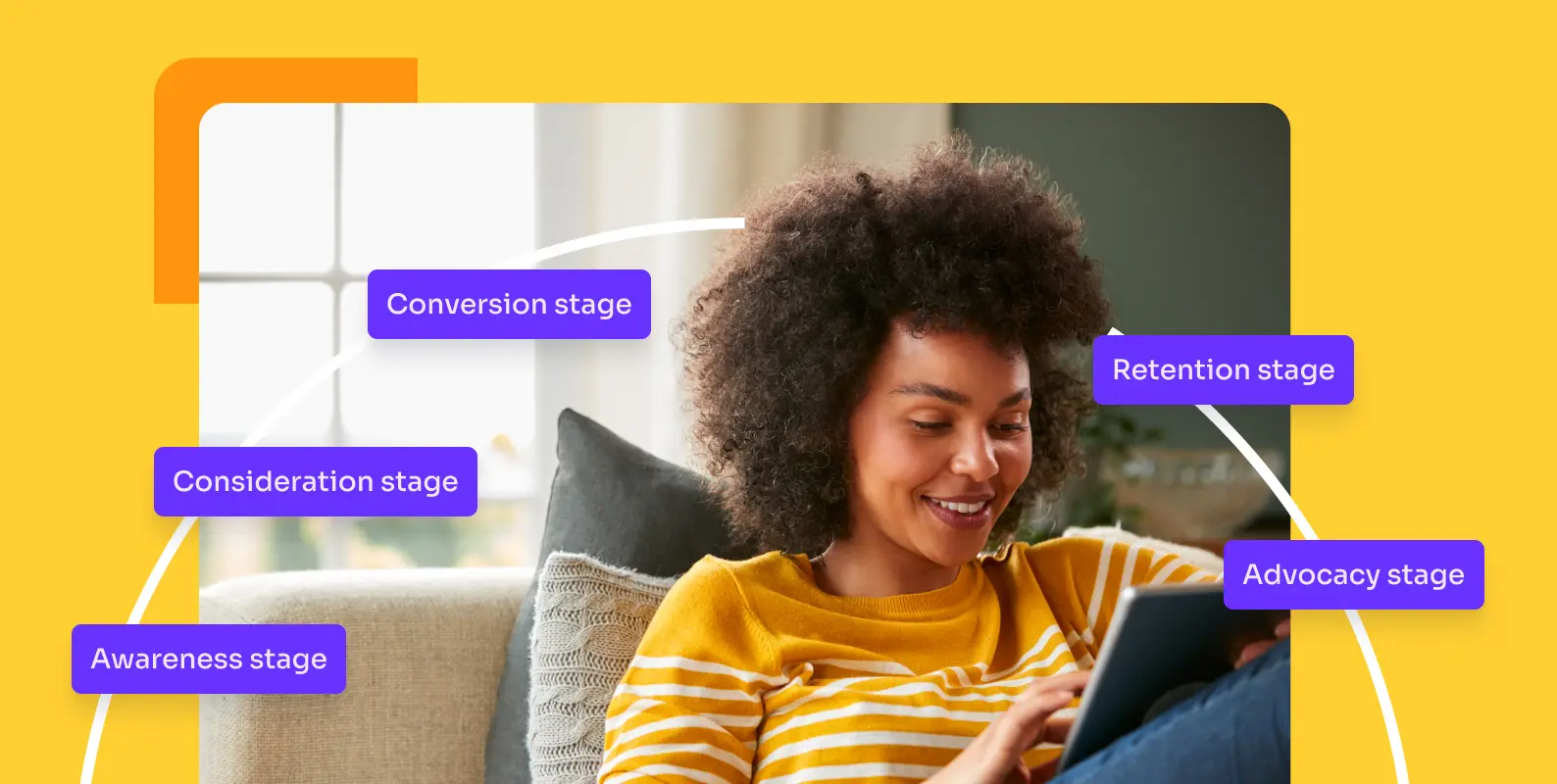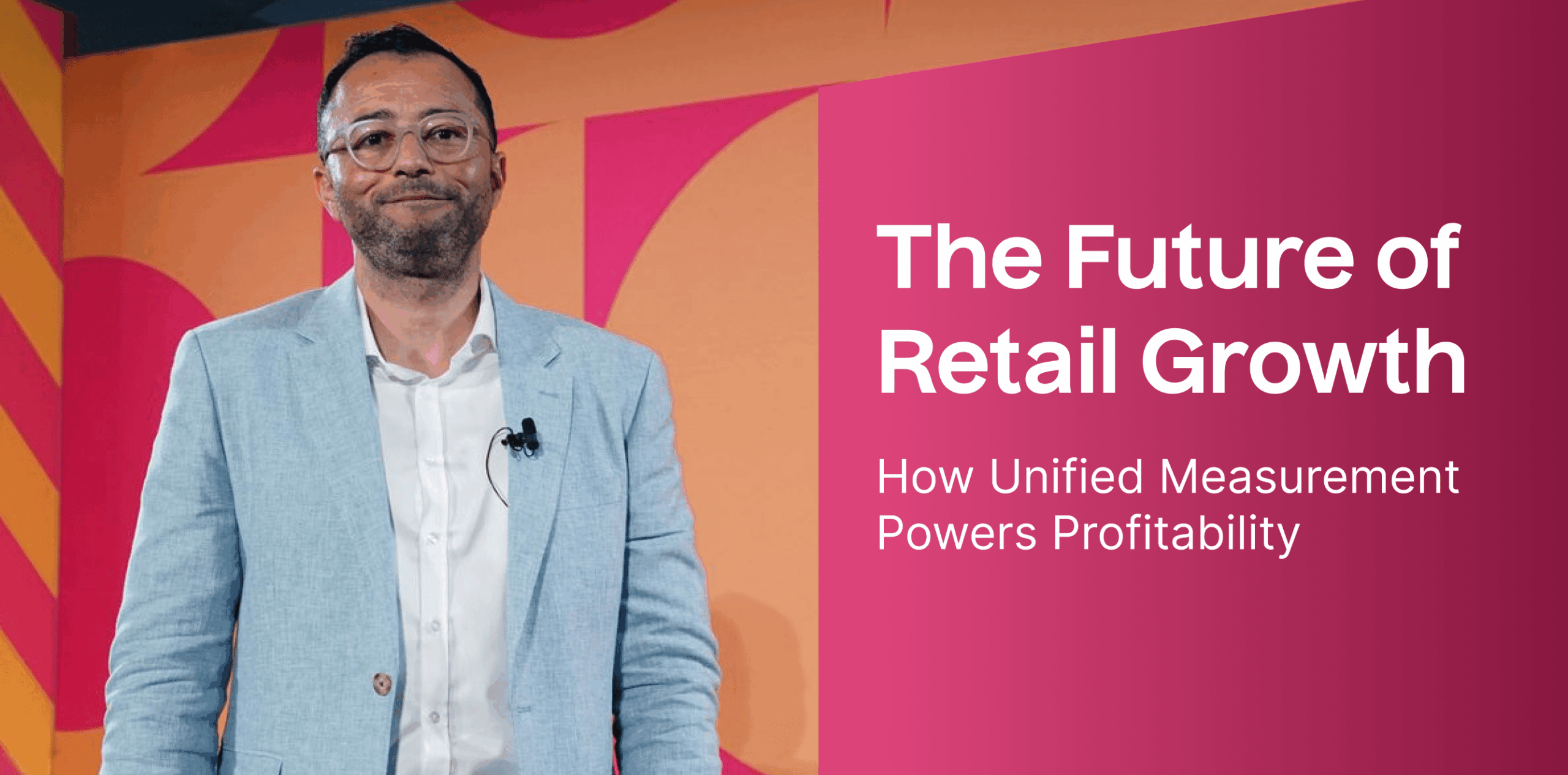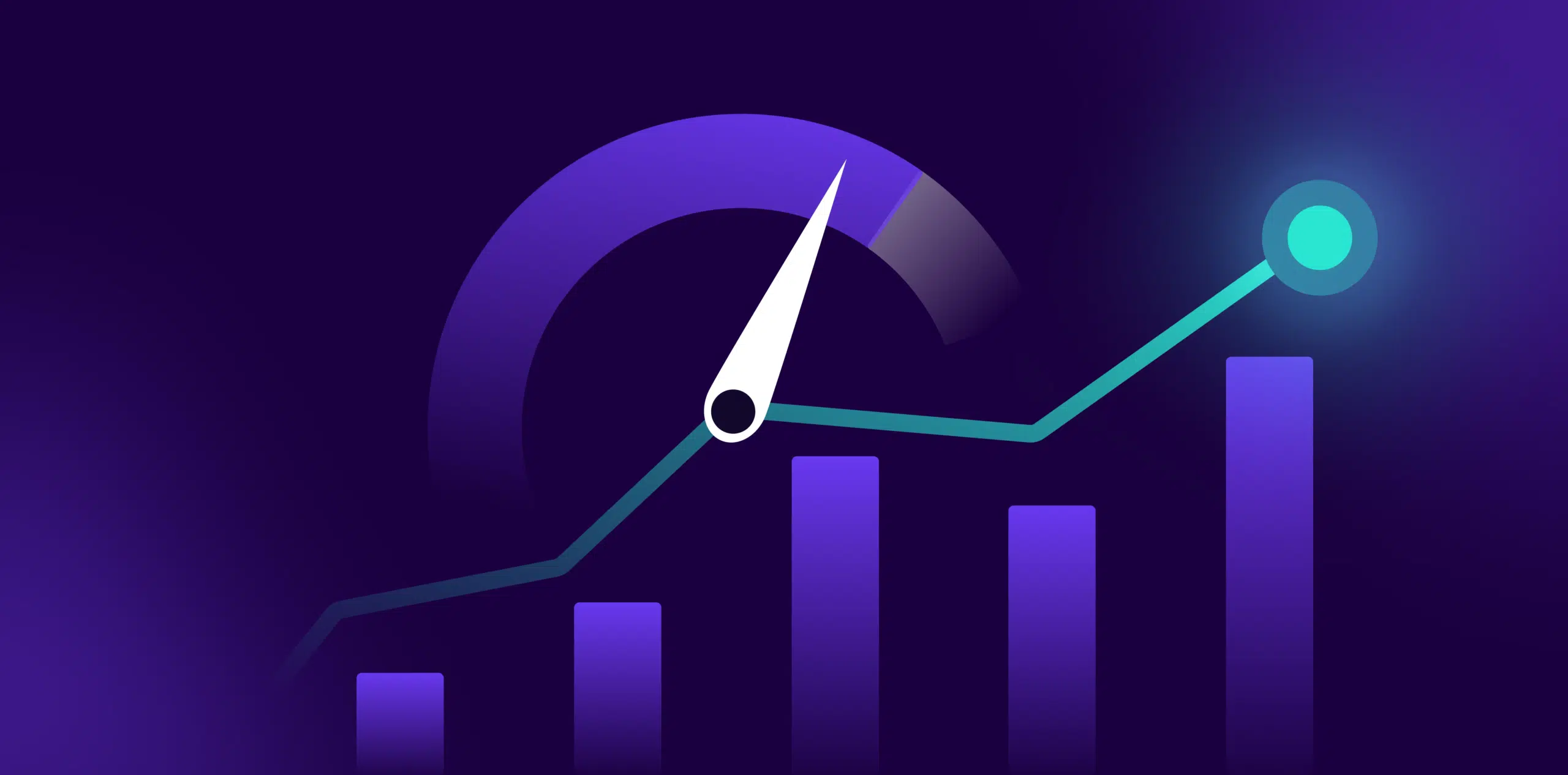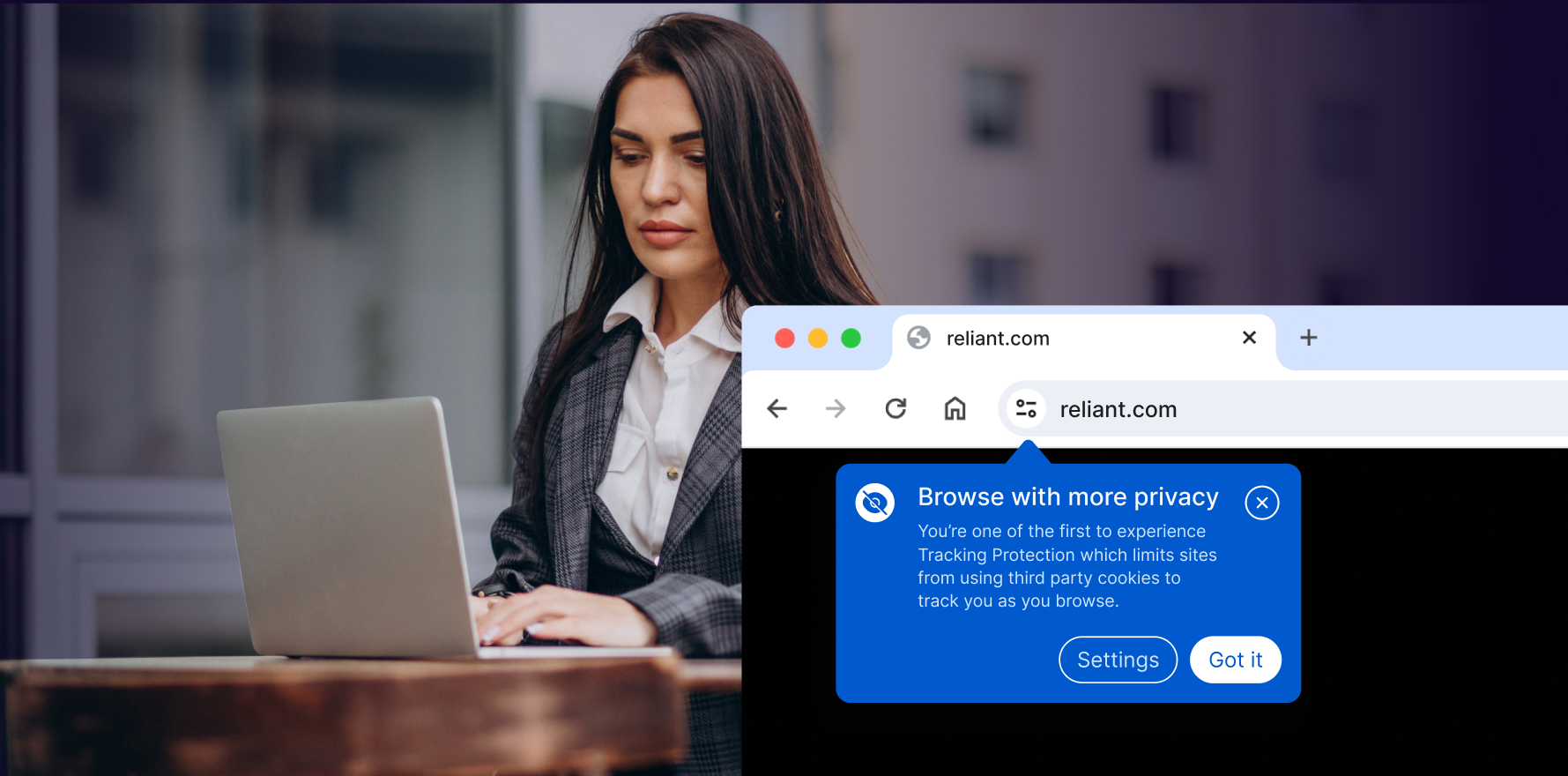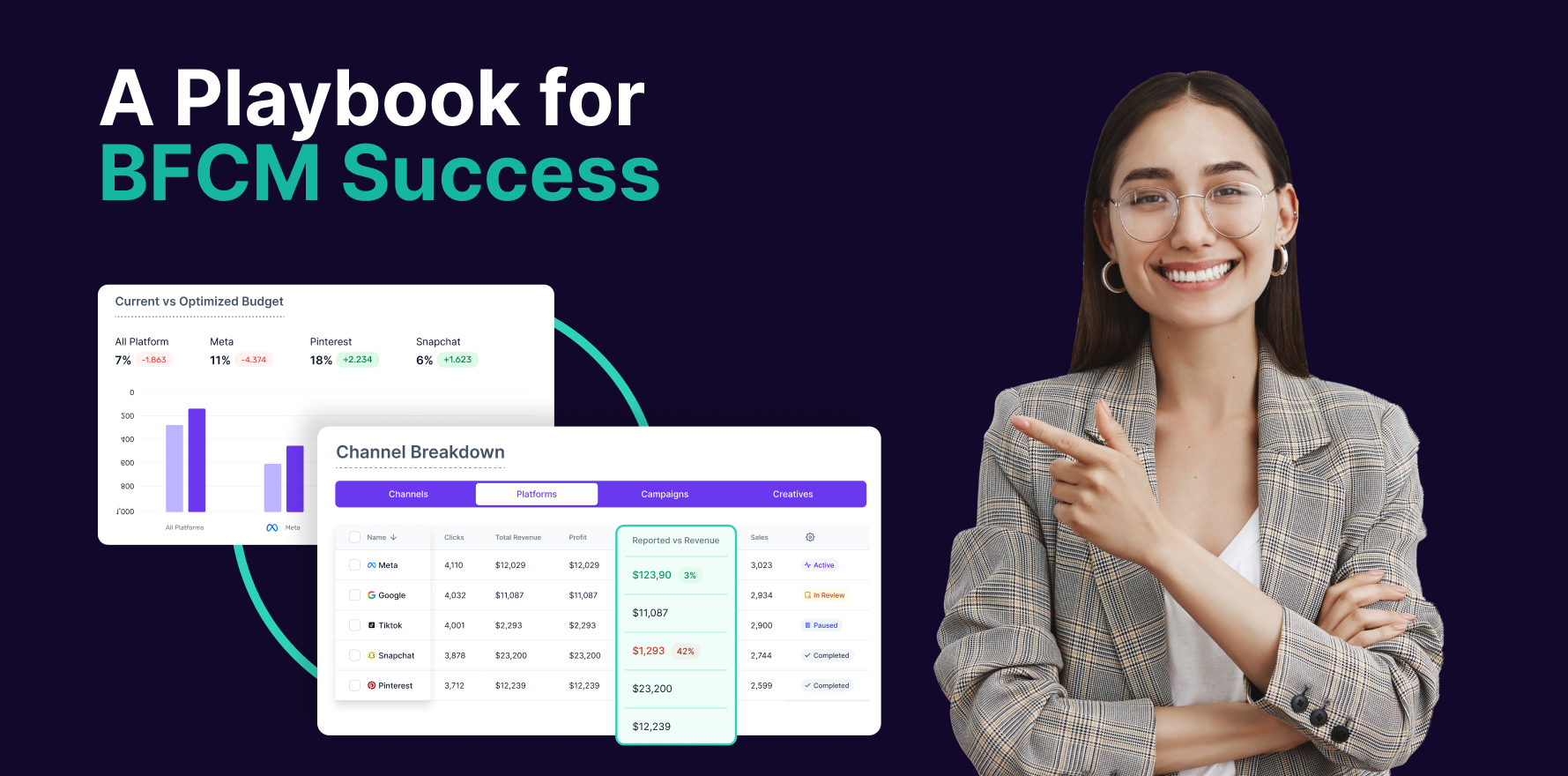Every business has users and prospects: everyone at a different stage in the customer lifecycle. For example, you would have prospects who’re just getting to know your products. And also repeat customers who love your brand.
At any given time, you have different sets of target audiences. What this means for your marketing efforts is that:
- You need to acquire new customers.
- Keep the loyal customers happy.
- Re-engage with disengaged customers.
- Bring each set into the next phase of the customer lifecycle.
In this article, we show you how to engage with customers at each stage of the customer lifecycle.
What is the customer lifecycle?
In the simplest terms, customer lifecycle is used to describe the stages involved in converting a lead into a buyer and ultimately a loyal customer. The stages of the customer lifecycle include before, during, and after making a purchase. They are:
- Awareness stage
- Consideration stage
- Conversion stage
- Retention stage
- Advocacy stage
What is customer lifecycle management?
Customer lifecycle management (CLM) is the process of keeping track of the different stages of a customer’s life, giving each one a set of metrics, and using those metrics to measure how well the business is doing. Think of the customer lifecycle as an arc that builds right from the first time the customer learns about your brand to the final goal: customer loyalty.
You need a loyal customer base and a customer lifecycle management strategy to engage with customers at every stage of the journey.
Throughout this article, we will cover the five stages of customer lifecycle marketing along with examples to improve the customer engagement in ecommerce and DTC industries.
How to engage with customers at each stage of the customer lifecycle?
1) Awareness stage
This is when the shopper discovers your brand, be it by coming across it on social media or actively searching for your brand.
Goal: To make a great impression before the shopper clicks or scrolls away.
How to generate brand awareness?
Men’s grooming brand Beardbrand nails the awareness stage of customer lifecycle management. Let’s see how.
1) Consistent messaging
Beardbrand’s mission is: To change the way society views beardsmen and to foster confidence through grooming. Beardbrand redefined its buyer.
All its marketing is built around the fact: that it’s okay to grow a beard. It’s okay to not fit the traditional stereotypes. You can have it your way.
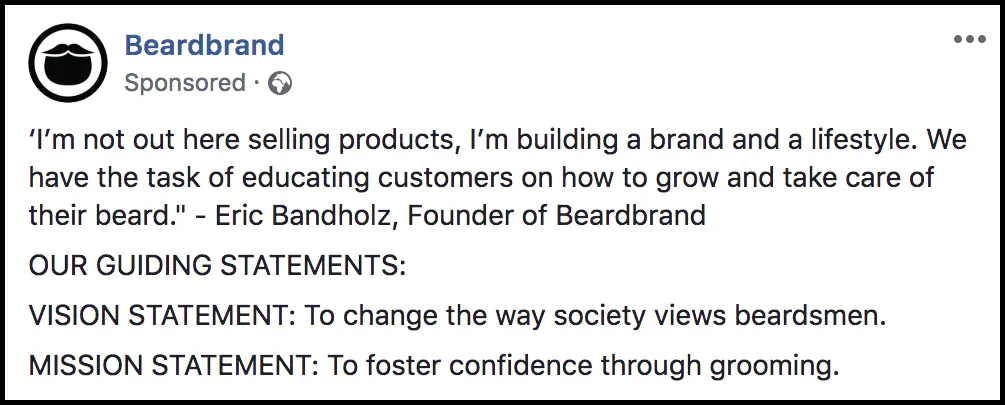
Action item: In your messaging, can you reassure your buyers that they are not alone?
Read more: An intriguing approach to brand storytelling for Ecommerce.
2) Paid advertising to reach a wider audience
In this carousel Facebook video ad, Beardbrand walks you through the four steps of beard care.
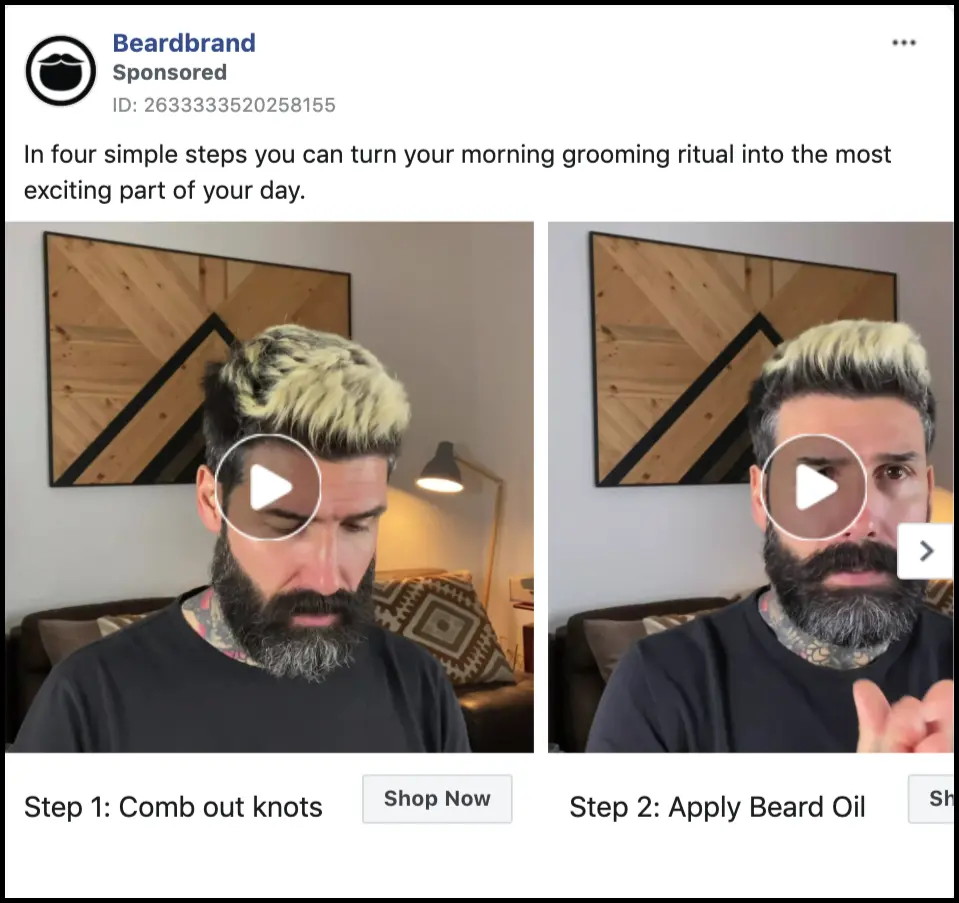
Here, instead of hard selling, the brand educates you with an exciting morning routine. In addition, another clever Facebook ad conversion hack is: while you watch the video guide, you can click through and buy the brand’s products easily.
And for shoppers who do not have the time to watch the video, the brand writes a maintenance guide as a variation of the ad.
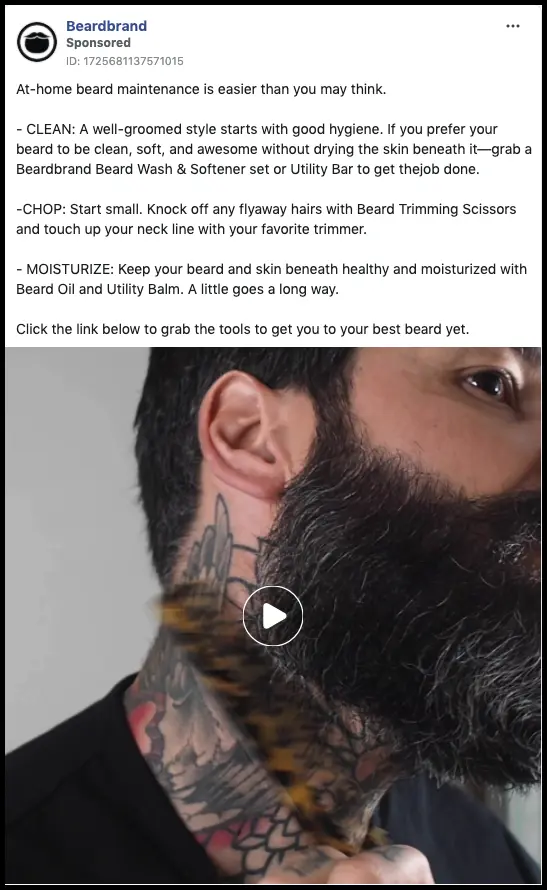
The ad first shows you that beard maintenance at home is easier than you think. The Facebook ad ends with a CTA inviting you to buy the tool mentioned in the steps.
Action item: You can create simple video guides around your niche and convert them into carousel ads to attract top-of-the-funnel prospects to your store as a part of your customer acquisition strategy.
3) Search engine optimization and content marketing
Beardbrand targets specific search queries depending on where the prospect is in the buyer’s journey.
For example, at the top of the funnel, there are educational and how-to queries like: how to grow a beard. And Beardbrand ranks #2 for the term.

The guide is nearly 8,000 words and is an excellent resource on the topic.
The middle of the funnel is where you would want to know more about the products and discounts. For example, they have a post explaining the difference between beard oil and beard balm. Within the article, you’ll find prominent CTAs to buy the products.
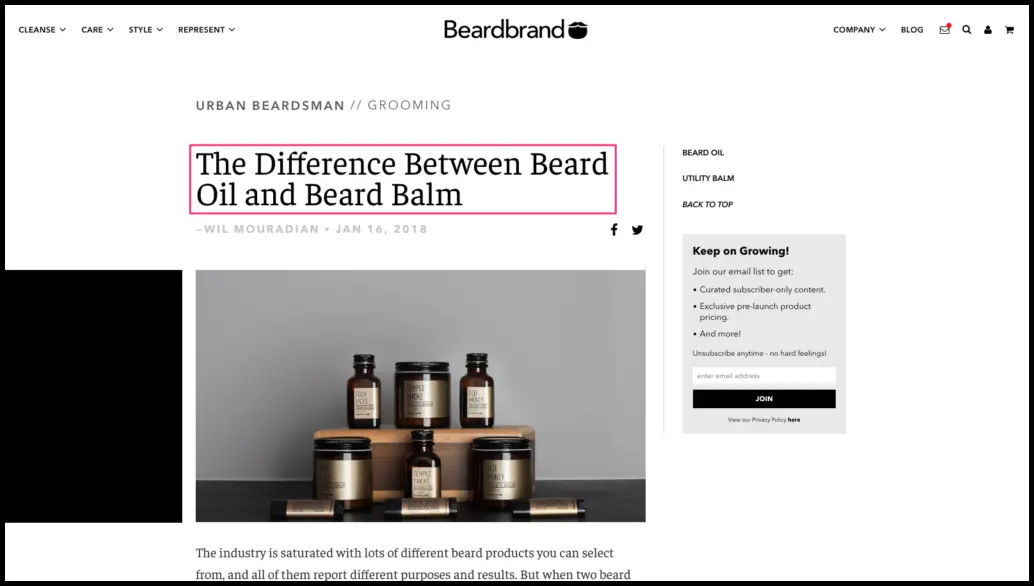
At the bottom of the funnel, when you’ve decided to buy a product such as a beard oil, you would search for “buy beard oil online.” And you see the following results:
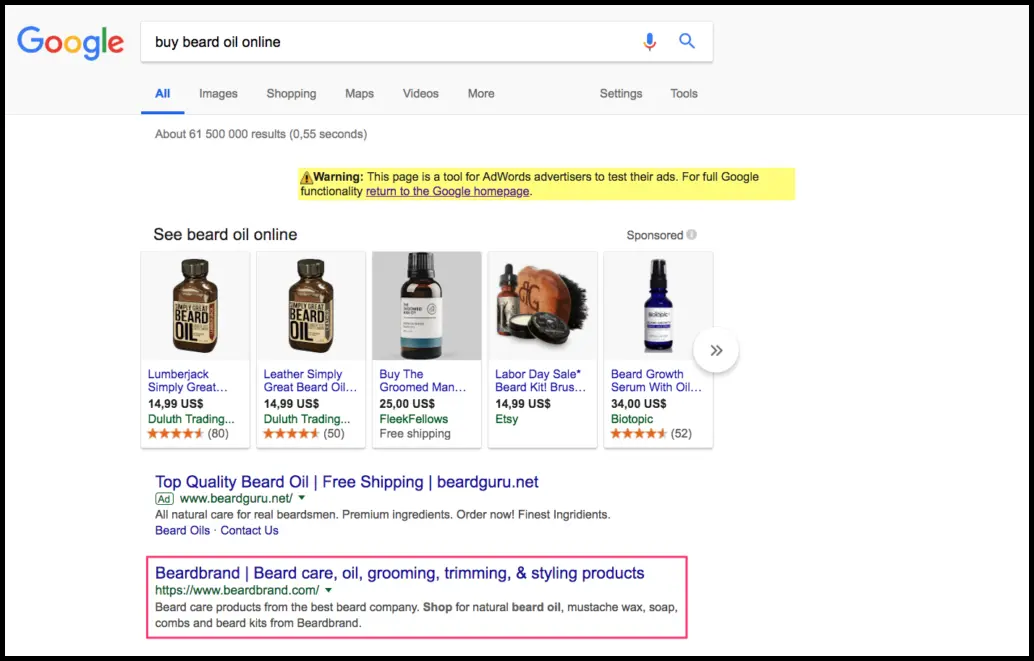
The company also ranks for other commercial keywords like where to buy beard oil.
Action item: Educate the customer by creating content that answers the buyer’s search queries at every stage of your funnel.
2) Consideration
This is the stage of the customer lifecycle model when customers are considering purchasing from your brand and are actively researching your products. Ensure that prospects trust your brand to share their contact information, be it email, phone number, or both.
Read more: The anatomy of high-converting product pages for your DTC brand.
Goal: Capture contact details from qualified potential customers.
How to engage with customers who’ve landed on your website?
Over the years, Bellroy has earned a reputation for being an ecommerce innovator for men’s wallets. It is one of the best examples of the customer life cycle at the consideration stage.
1) Help visitors make better decisions with detailed product specifications
Bellroy’s product descriptions help you make better-informed purchase decisions.
Firstly, Bellroy helps you find the best option assuming that you do not know the dimensions of your national currency.
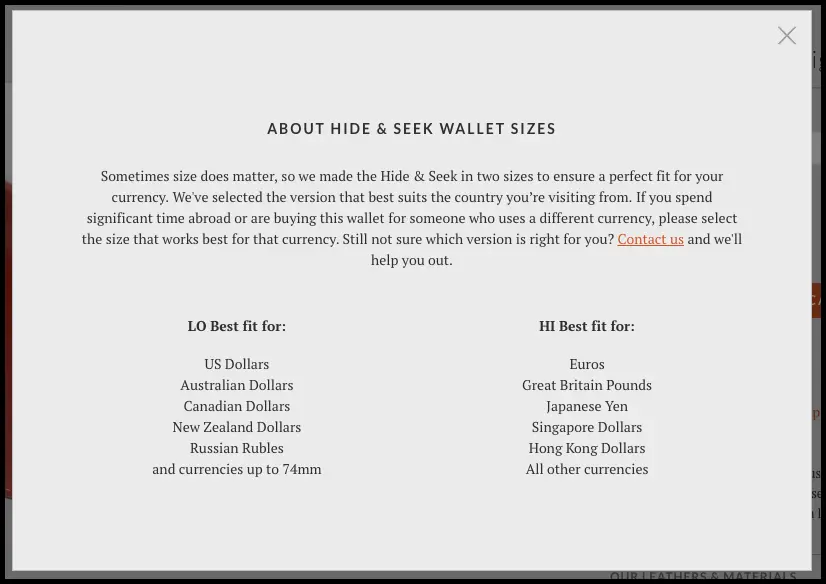
Each product has photos taken from multiple angles to show you how it looks. And there’s a video that details the product specifications.
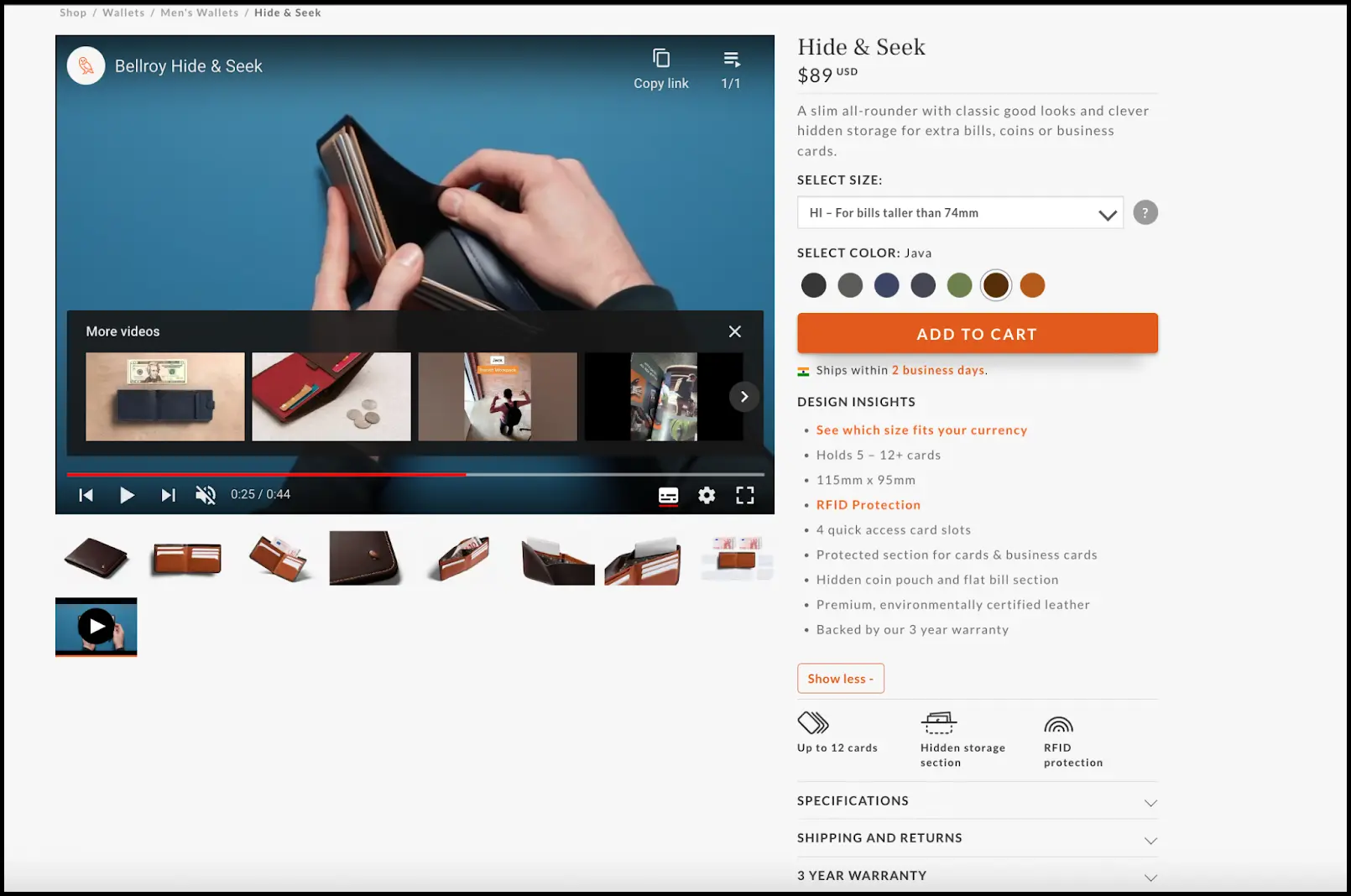
The design insights give a better understanding of the product such as RFID protection (highlighted), 4 quick access card slots, and so on.
What’s notable is that each product page has shipping and returns and warranty information.
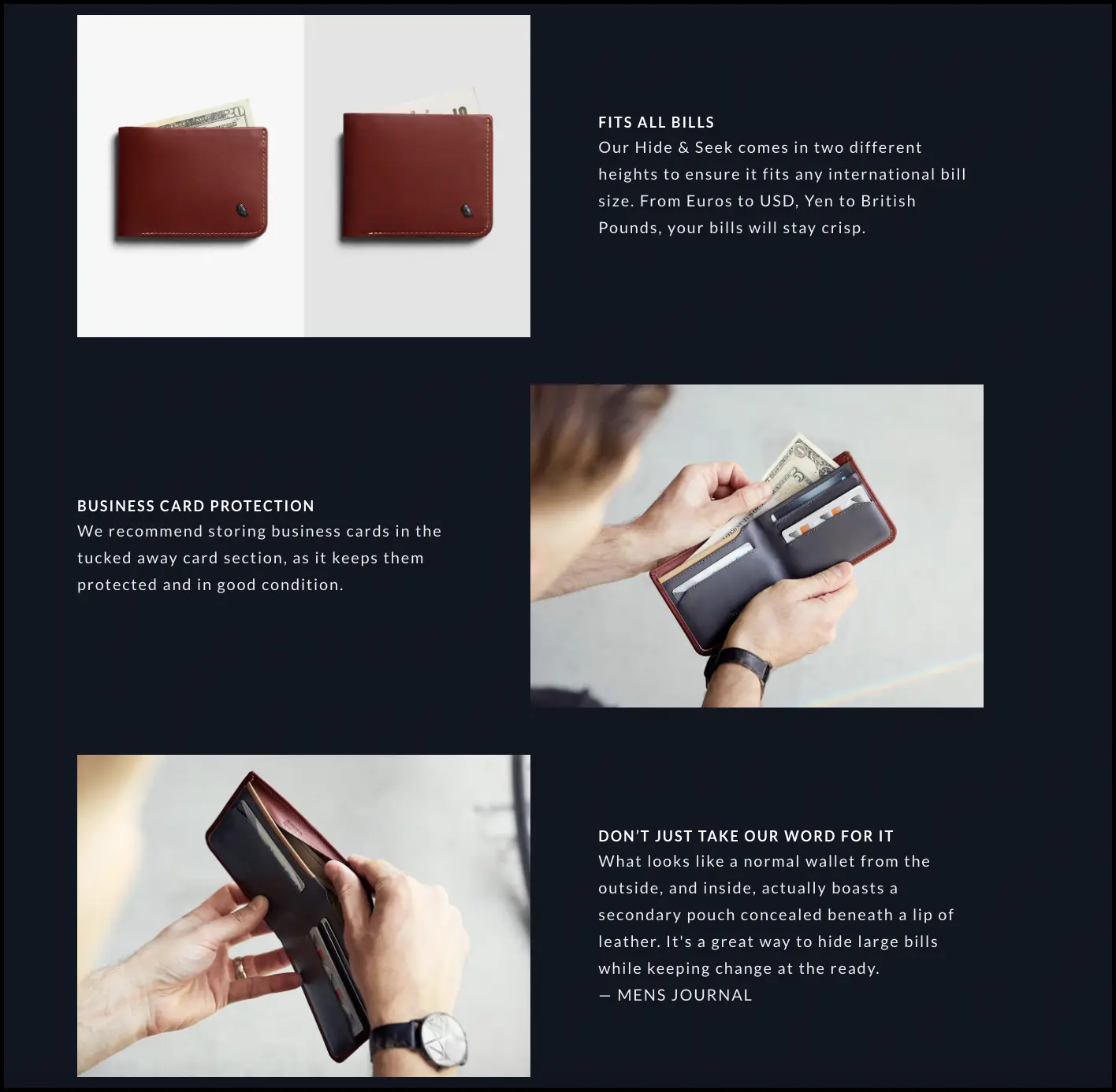
Action item: Use a video to explain the working of your products.
2) Retargeting using paid ads
Retargeting in ecommerce works great because you are re-marketing to prospects who have already discovered your brand and interacted in some way be it product browsing, visiting a landing page, or viewing a video on your Facebook business page. Think of it as a second chance to convert visitors who are aware of your brand into customers.
Bellroy’s Google PPC ads position its products as a solution to the customer’s travel troubles. From here, you could direct the buyer to a landing page where they could sign up for a discount.

Action item: If you are just starting with retargeting ads, Google Display Network is the cheapest means to raise brand awareness.
3) SMS and email marketing
At the consideration stage of managing the customer lifecycle, they are not ready to click on “buy now.”
Use soft nudges to push them toward your offer without shoving the product down their throat. Deliver valuable content, talk about the company values, tips on using the product, and customer testimonials to build trust as a part of your customer retention strategy at this point of the first-time buyer’ journey.
Bellroy has a landing page for its newsletters where they let the customers know what to expect: product releases, mission and values, and subscriber exclusives.

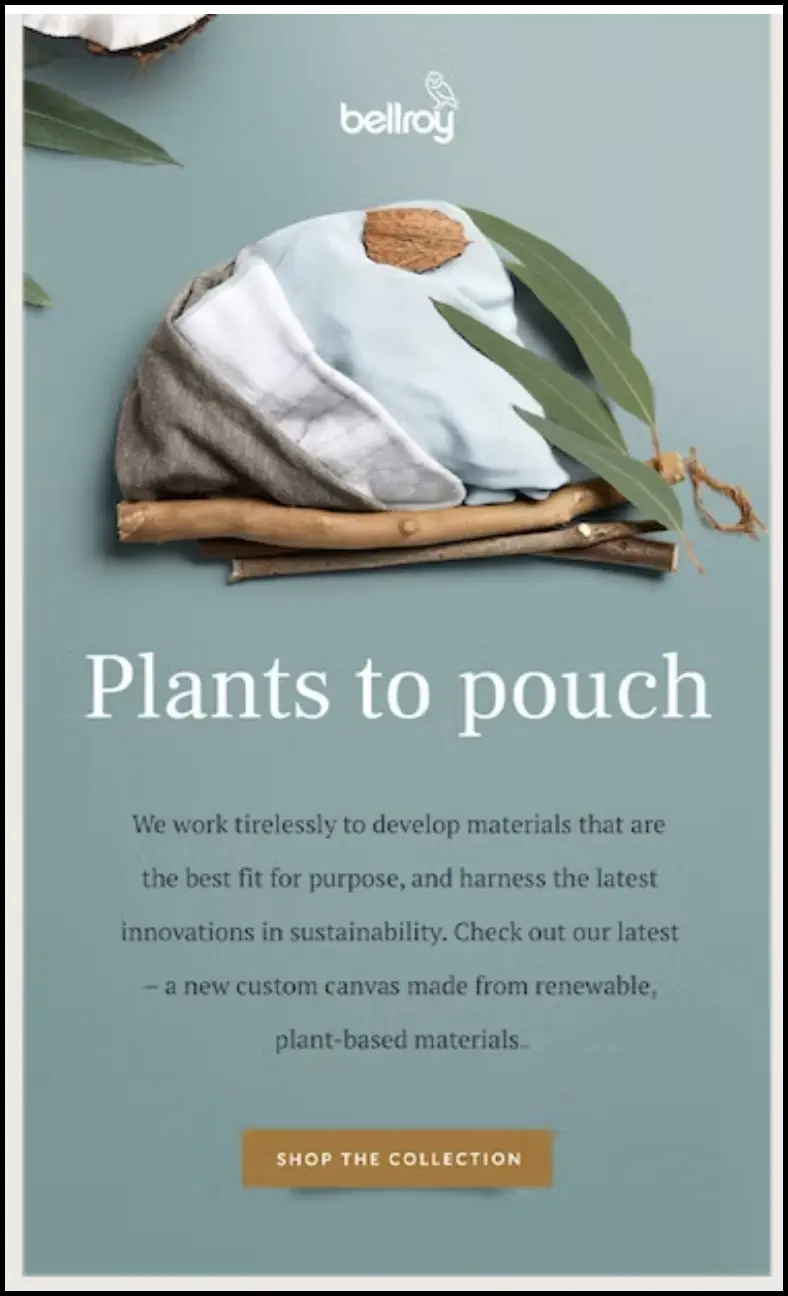
If you are wondering how to engage customers in a conversation: For first-time shoppers who do not know what to buy from the brand, this email serves as a great starting point for customer engagement.

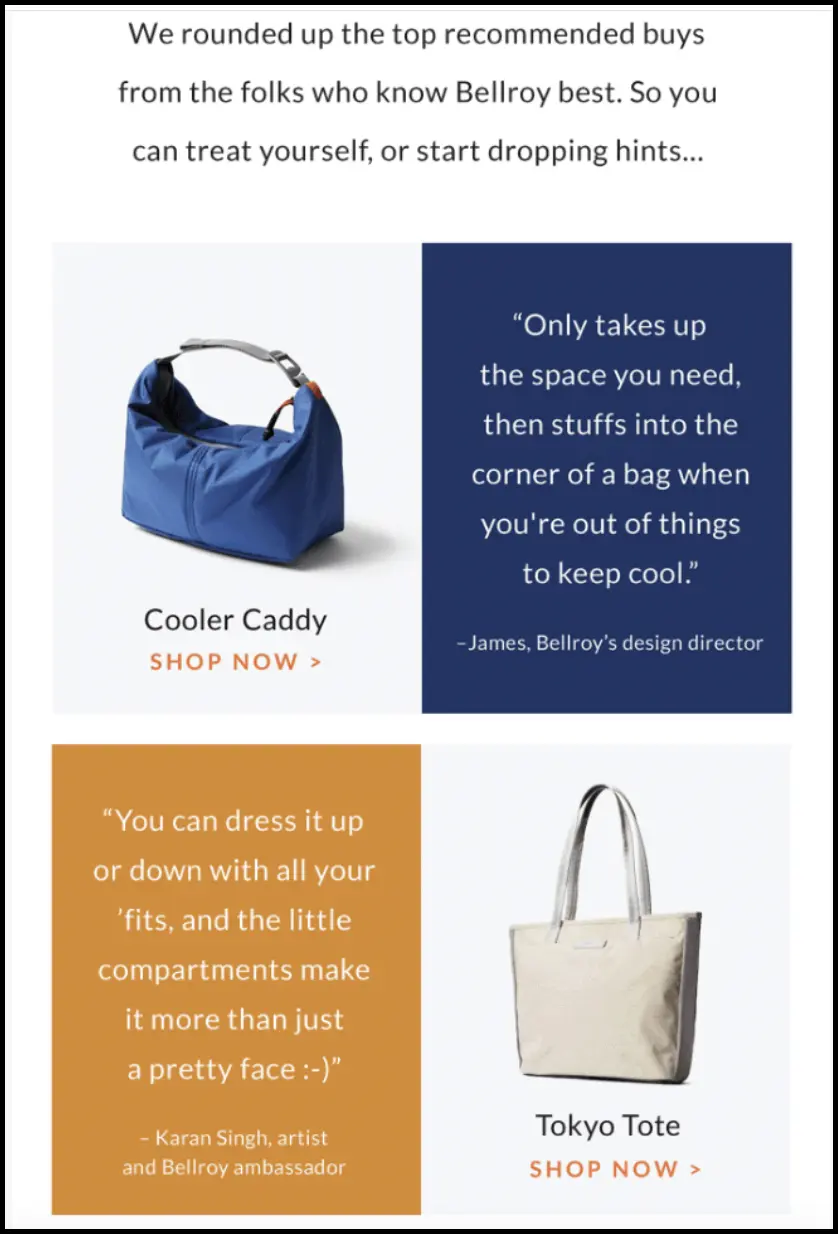
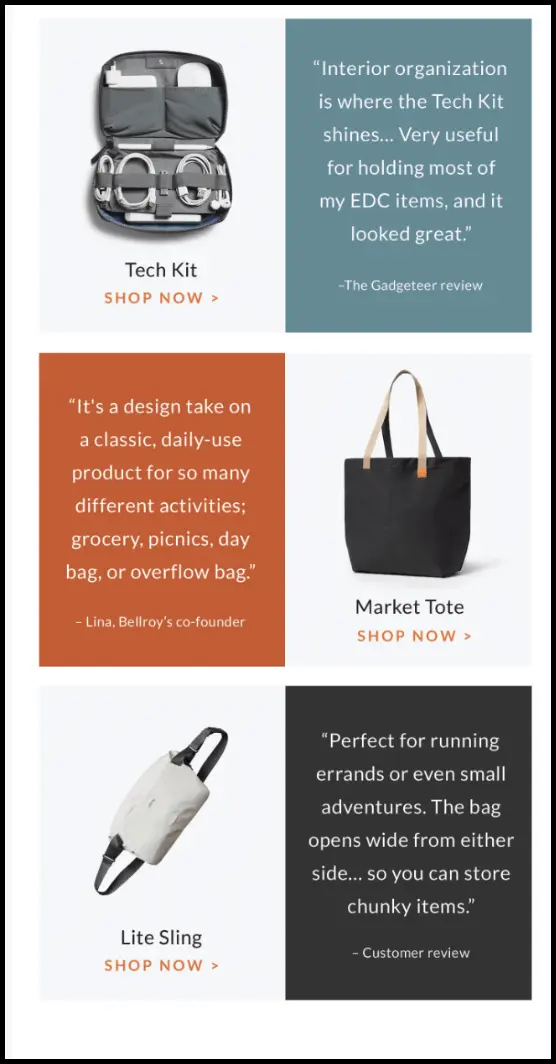
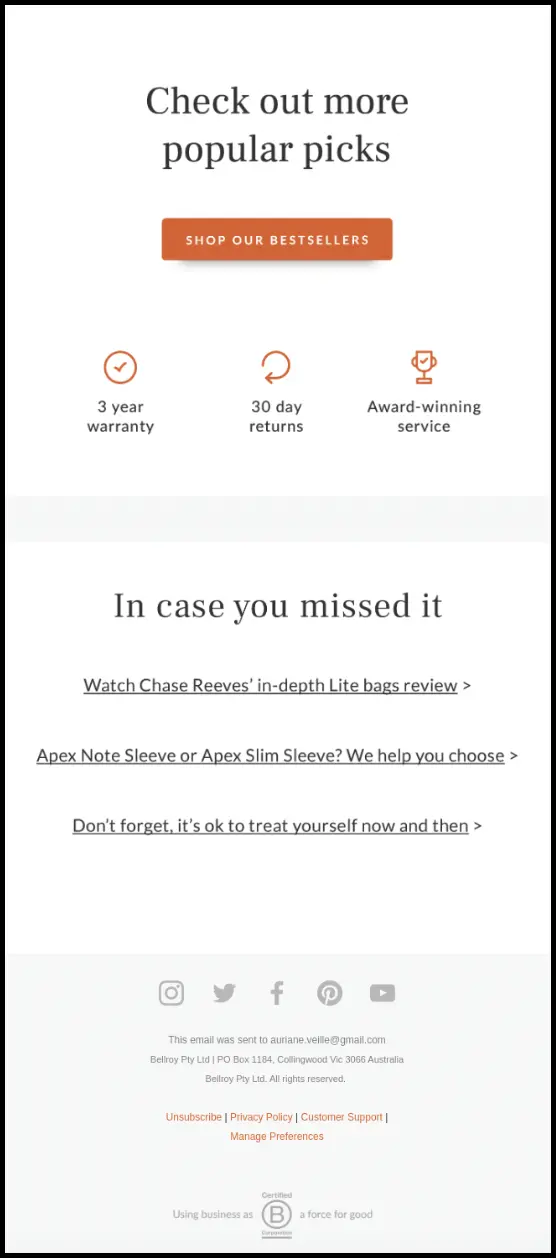
At the consideration stage, using SMS marketing as an example of customer lifecycle, start conversational texts when the customer has reached out for more information.
Here’s an SMS marketing campaign example by Judy: a supplier of emergency products such as ready-to-go survival kits, first aid essentials, and more. They send you both promotional and personalized messages.
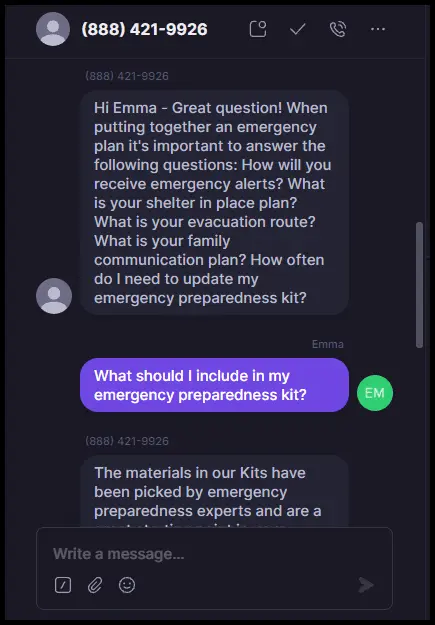
Action item: Be it SMS marketing or email marketing, make sure to add a CTA, guiding customers to the next stage of the funnel.
3) Conversion
Your prospects have enough information to make a purchasing decision. So then why is it important to engage with customers? They may continue browsing your brand’s product pages and adding items to their cart. However, they might be waiting for better options or a price drop.
Some customers would abandon carts for reasons such as shipping fees, slow checkout, good old indecisiveness or cart abandonment mistakes.
Goal: Making it easy and appealing for shoppers to make their first purchase.
How to engage a customer at the conversion stage?
1) Loyalty programs
A well-thought loyalty program has the potential to:
- Attract new customers
- Retain existing ones
- Re-engage with dormant customers
- Encourage them to spend more
Here’s how ecommerce business The Sill which sells plants online has one of the best loyalty programs as an example to engage customers.
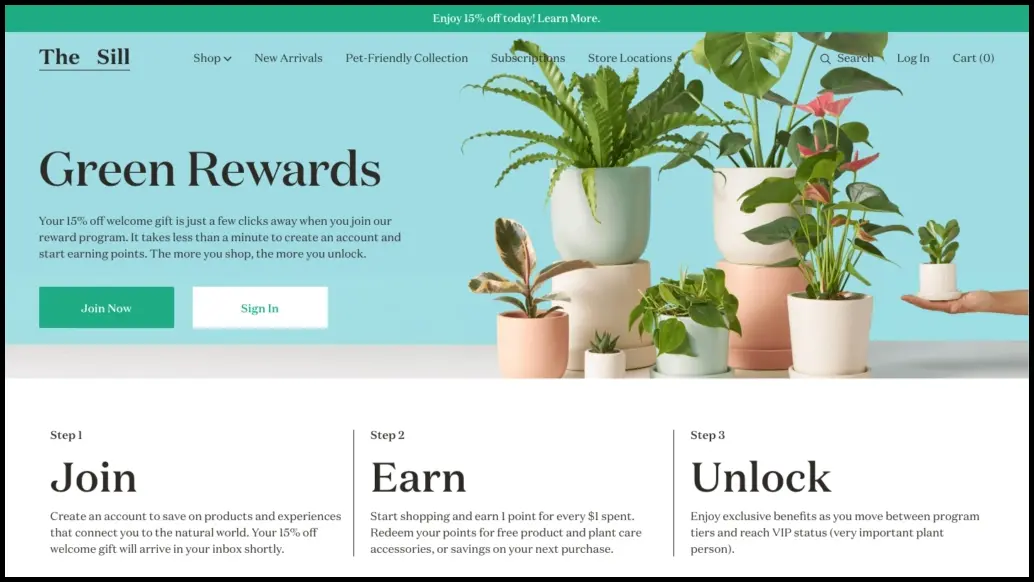
Firstly, the loyalty program is called “Green Rewards” which is in line with what the brand does and is a unique name.
On a close look, you can see the 15% welcome discount which incentivizes the membership instantly.
There is a tiered program approach where you can join, earn points, and unlock new levels as you spend more.
Even better is that The Sill’s program is such that you don’t just get points for shopping but also for submitting your birthday, following the brand on social media, referring friends, and so on.
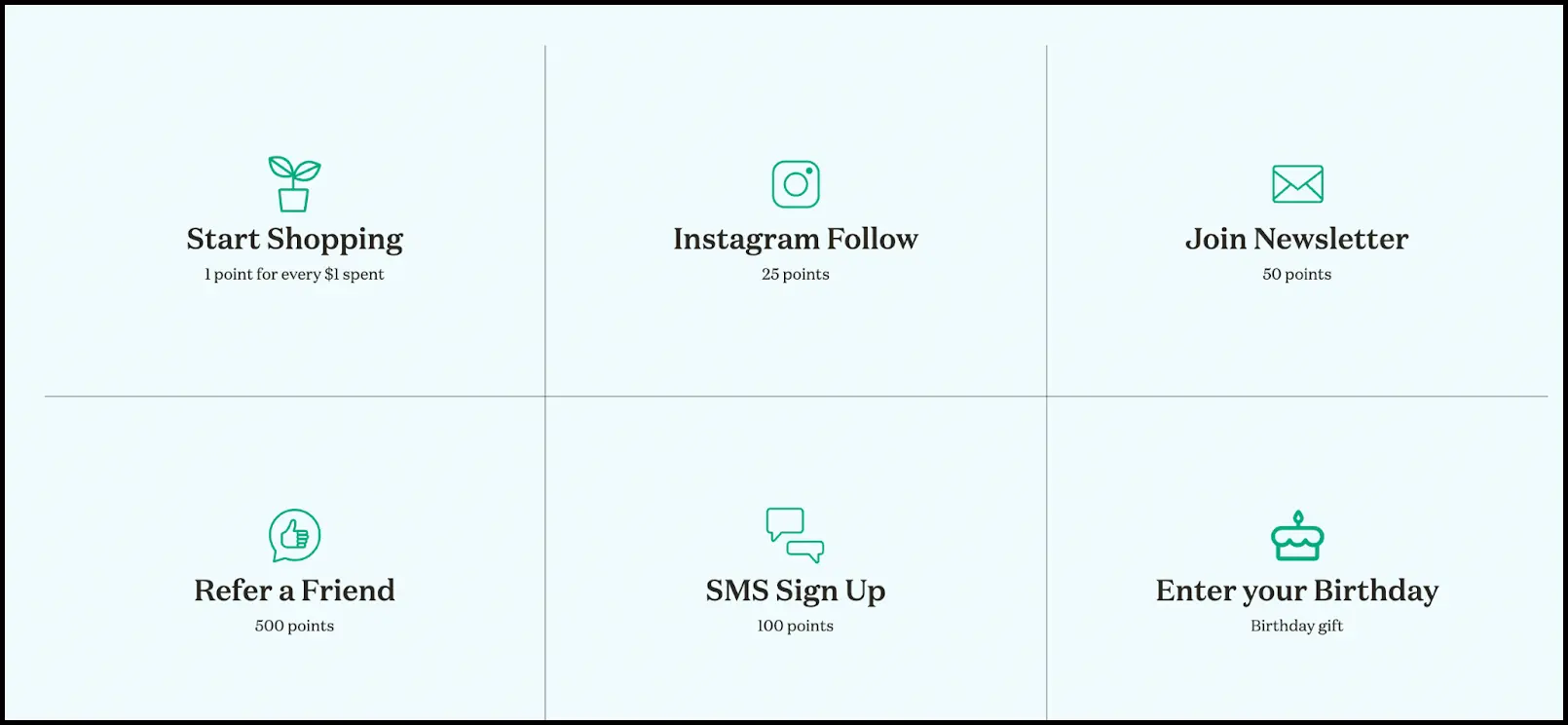
Lastly, you can either redeem your points with: getting a free product or taking dollars off your next purchase.
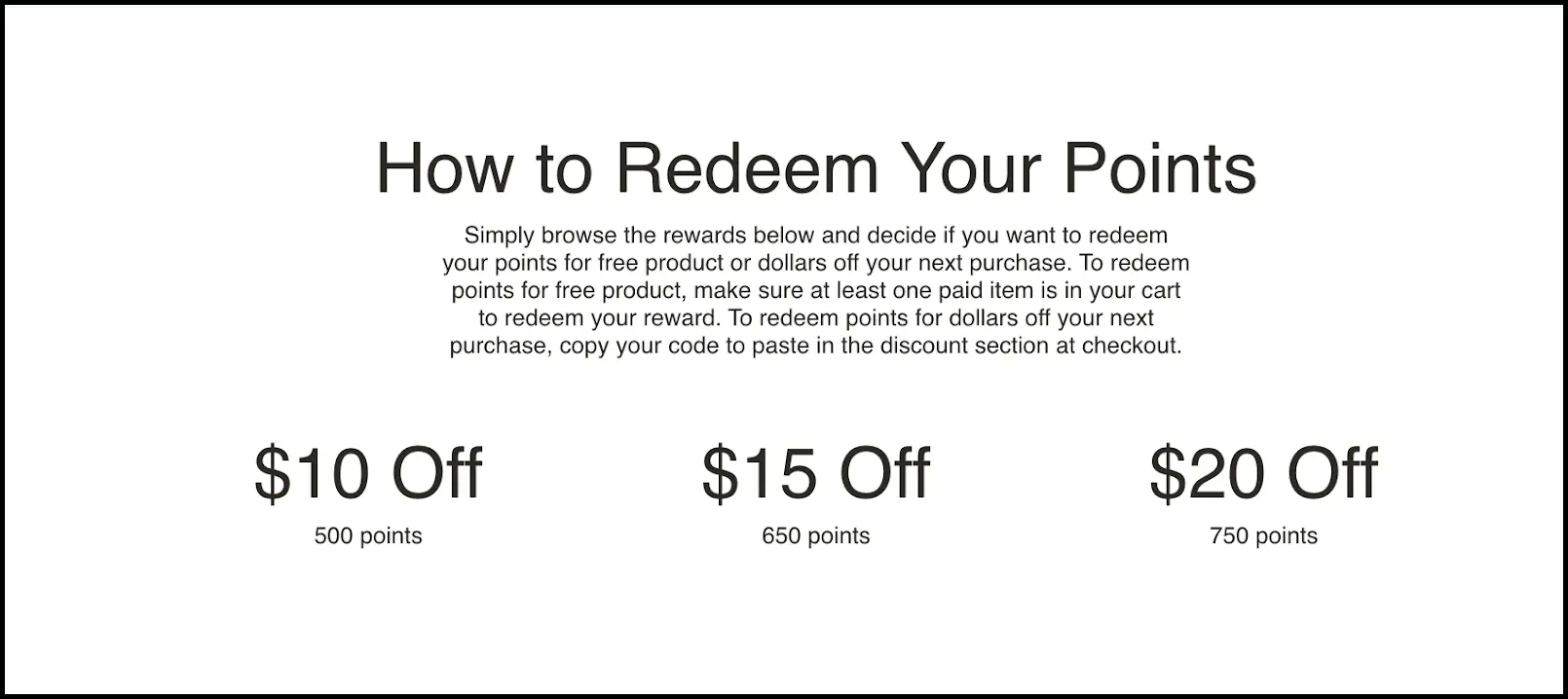
Action item: Make sure that your loyalty program is easy to understand and not filled with jargon or complex.
2) Automate cart abandonment emails
Remember that your customers are busy. If they abandon a cart, chances are they would forget about the product and what attracted them to your brand. A gentle reminder could rekindle that desire using customer experience automation.
Cali Fabrics is a DTC brand selling different types of fabrics such as linen, denim, twill, and so on.
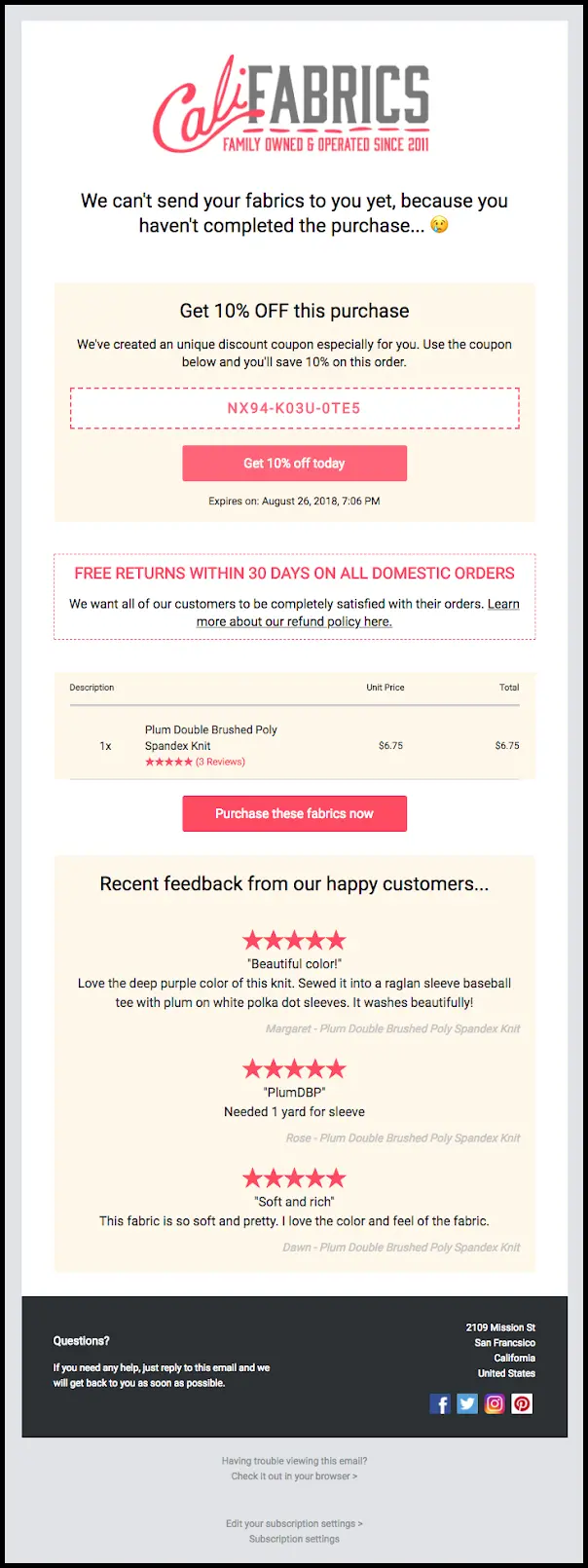
What we love about its cart abandonment email is that it is simple, elegant, and has good visual consistency.
The email has a discount coupon with an expiry date.
The product ratings and reviews further ascertain that this is a good product that the buyer will not regret purchasing.
Adding a note about the returns policy removes the uncertainties which may have had an impact on the customer abandoning the checkout initially.
Action item: Keep the abandoned item front and center in the email to remind the customer of what they have left behind in the cart.
Read more: 13 Really Specific ways to increase your Average Order Value (AOV) in 2023.
3) Optimize the checkout experience
Retailers, ecommerce brands, and DTC companies optimize the checkout process to improve the store’s online conversion rate. Here, the goal is to minimize distractions and drive every shopper toward the purchase confirmation email.
The most effective ecommerce and DTC checkout pages aren’t flashy or visually appealing. When a customer adds something to their cart, you have already persuaded them to buy your product. There is no need to wow them again with fancy language. At this stage of the lifecycle it is about getting them to complete their purchase as soon and quickly as possible. This is one of the most important Ecommerce checkout best practices.
ASOS‘s checkout page is the best case in the point example for the conversion customer lifecycle stage.
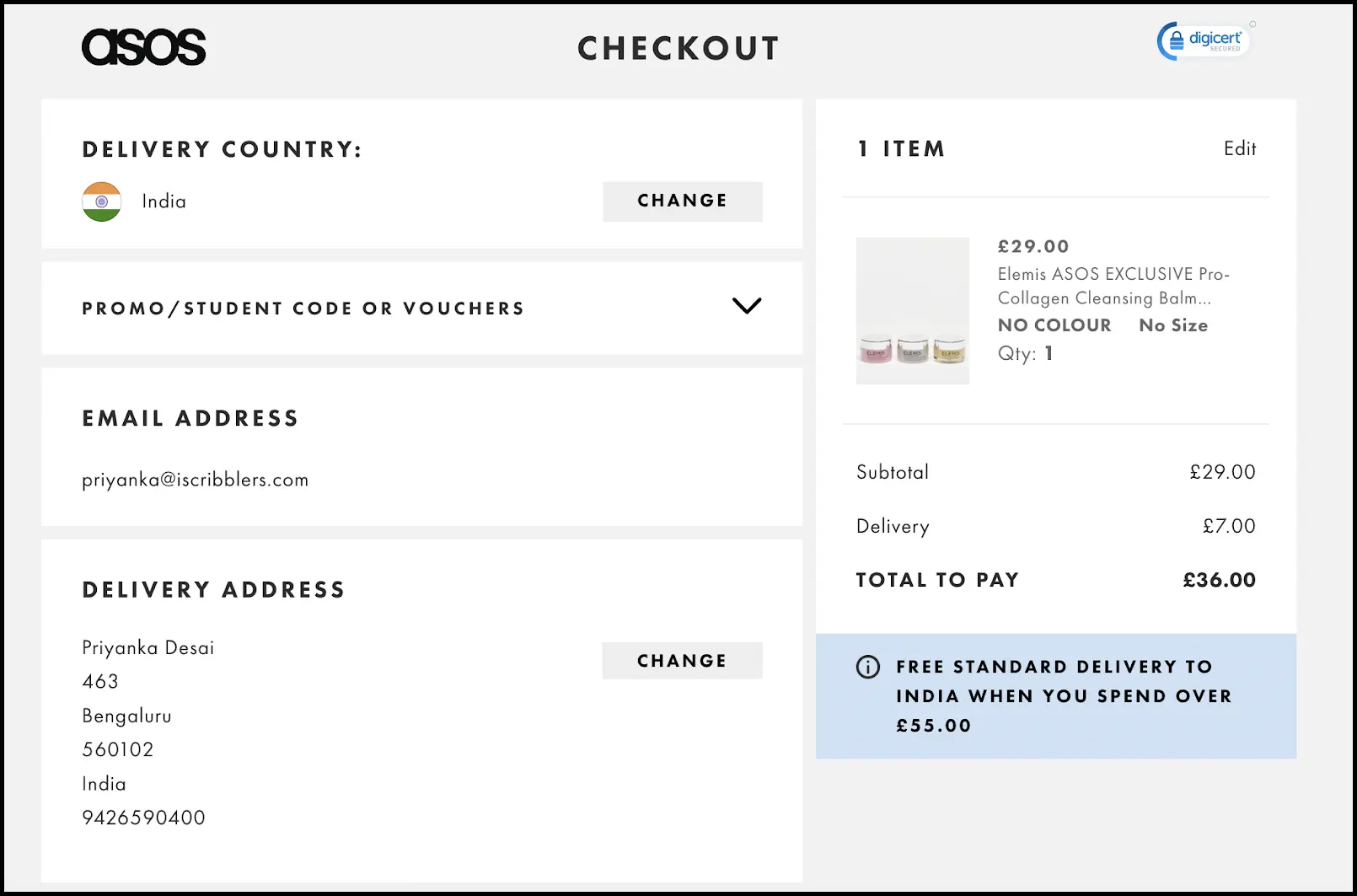

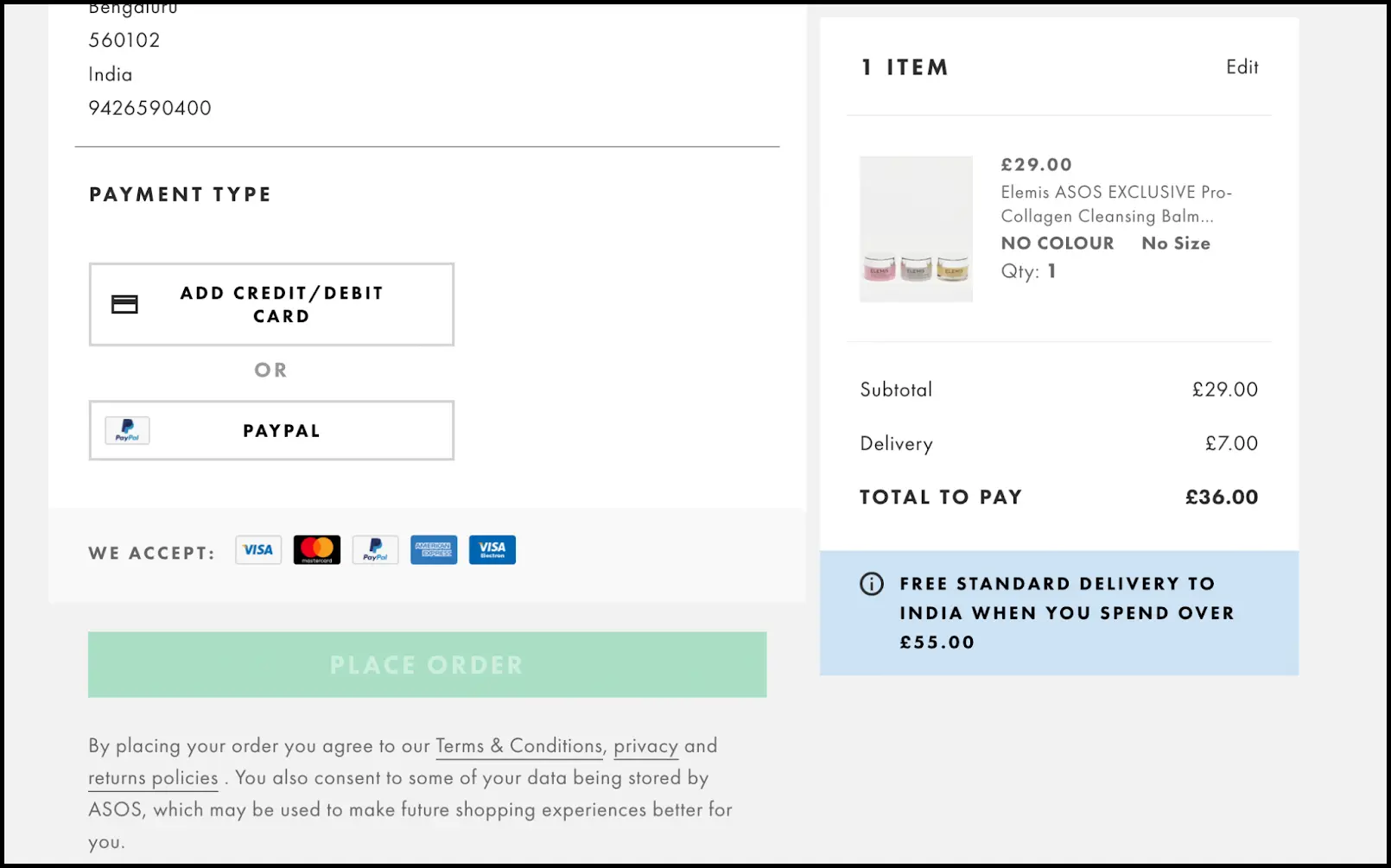
Here, the streamlined form has no unnecessary images or wasted words: it clearly displays the price and any additional costs (delivery options), and the payment methods they support.
Action item: Don’t miss out to streamline a linear mobile checkout experience. Smartphones have a limited amount of real estate so make sure to eliminate distractions.
4) Retention
Sure thing, finding new customers is exciting. But what’s even more important for your business is retaining existing customers to keep generating recurring revenue. The retention stage is where you can convert first-time customers into loyal fans who support your brand.
Read more: Best customer loyalty apps to boost retention in 2023.
Goal: Incentivize repeat customers to build long-term relationships with your brand.
How to engage with customers in retail to encourage repeat purchases?
1) Winback and purchase follow-up emails
As an integral part of retention marketing, if you don’t send dedicated automated winback emails to former customers, you’re ignoring a huge opportunity to increase brand loyalty and customer lifetime value (LTV).
Read more: 5 Automated emails every DTC brand should send.
The several reasons why customers have stopped buying from you could be:
- They opted for the competitor’s products
- They had a bad experience, or
- Stopped using the product altogether
Whatever the reason, a winback email strategy helps you find out what caused the customer to lapse and address these issues heads on.
Once you are convinced that winback emails should be a part of your marketing automation toolkit, the five main goals and actions to focus on are:
- Identify and segment lapsed customers
- Incentivize them to return
- Ask for feedback
- Drive urgency in your winback messaging
- Let go and say goodbye
If you’re looking to entice your customers to come back to your brand, you should take inspiration from Our Place: a cookware and dinnerware ecommerce brand.
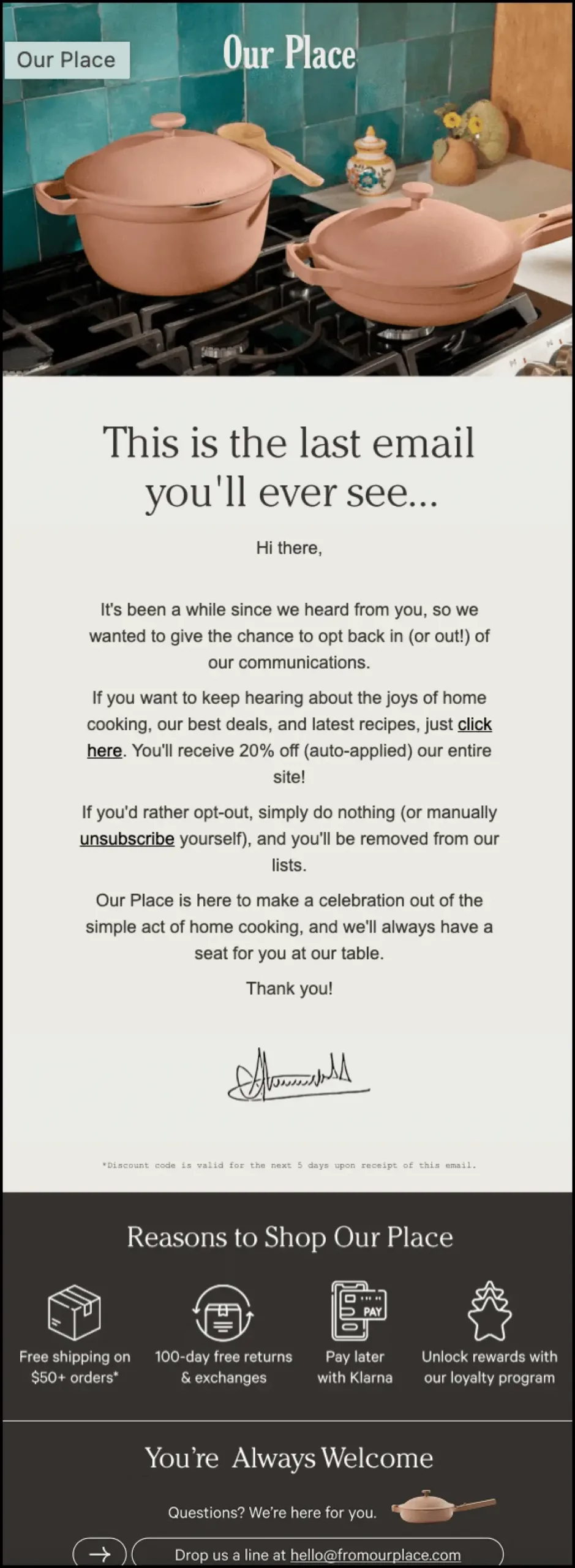
What we love here:
The subject line: This is the last email you’ll see.
Content: They have stitched the narrative together to say goodbye to the email recipient. They also acknowledge that the person hasn’t engaged with their messages in a while so they’re giving them the option to opt-out.
Below, you see a link to opt-in back. They sweetened the deal with a 20% discount.
CTA: They adopt a no-fuss approach with simple CTAs of subscribe/unsubscribe. It limits the number of choices the customer has to make.
In between the CTAs: they highlight free shipping, 100-day return policy, pay later options, and their loyalty program.
The last CTA at the bottom encourages customers to ask questions.
Action item: Don’t leave money on the table by failing to address the customer lifecycle with retention marketing. As a part of your customer rate optimization strategy, get data, learn, and A/B test to improve the messaging to cultivate repeat customers.
2) Customer service
In today’s digital-first world, Ecommerce customer service is a prerequisite for your brand’s success. As per Microsoft, for 95% of customers, customer service is the most important aspect of brand loyalty.
A few foundational customer service channels for your customer lifecycle management are:
Email – To provide fast and asynchronous support.
If you are a team of one wearing multiple hats, have a standard inbox “support@company.com” and get started. It is the easiest to set up.
Social media – To support your customers in public.
New customers are most likely to look at a company’s social media to determine if they take customer support seriously. The key is to offer customer support on social media channels that are most used by your customers and not try to be everywhere.
Live chat – To fix customer issues in real-time.
At this stage of lifecycle analysis, live chat caters to both new and existing customers. Remember that your live chat does not have to be available 24/7, instead, you can set the hours such as the highest traffic times with additional hours added during a sale and post them on your website.
FAQs or instant answers page – To equip customers with answers.
This can include:
- Billing
- Order processing
- Shipping
- Return and exchange policies
- Customer accounts
Action item: At important customer support touchpoints (such as the contact page on your website) let customers know how quickly they can expect a response.
5) Advocacy
At the advocacy stage of customer lifecycle management, customers have become loyal supporters of your brand. With the right customer advocacy strategy they would happily recommend your products to others.
Goal: Converting the first-time buyer into a brand advocate.
Lifecycle marketing, at the advocacy stage, should focus on building customer loyalty.
1) Ask for their feedback/reviews
Asking for product feedback or review shows that you value the customer’s opinion. Send an email or SMS requesting feedback a few days after the delivery.
If someone leaves a negative review or gives a 3-star rating, your support team could immediately get in touch with the customer. This is your opportunity to try and win back the customer and understand any potential issues with the product or the supply chain.
On the other hand, if you see a loyalist who left a 5-star rating, thank them with a discount such as 15% off on their next purchase. The person has the potential to be a high-value customer, so your email marketing flow could offer propositions such as subscription, buy-more-save-more, and loyalty programs.
Action item: Use positive reviews to target prospects who are in the consideration stage of the customer lifecycle.
2) Loyalty programs for VIP customers
One of the most important KPIs for Ecommerce and DTC brands is keeping the customer engagement rate high. But if you have only transaction-related touchpoints, it’s difficult to maintain a relationship with first-time customers.
Ecommerce reward programs go beyond the “only points for purchase” mentality and reward other behaviors as well. This way, they’re incentivized to stick around and redeem the points for the second and third purchases.
The online retailer Zappos lets customers who are a part of the Zappos VIP program earn points for qualifying purchases on the Zappos website and app.
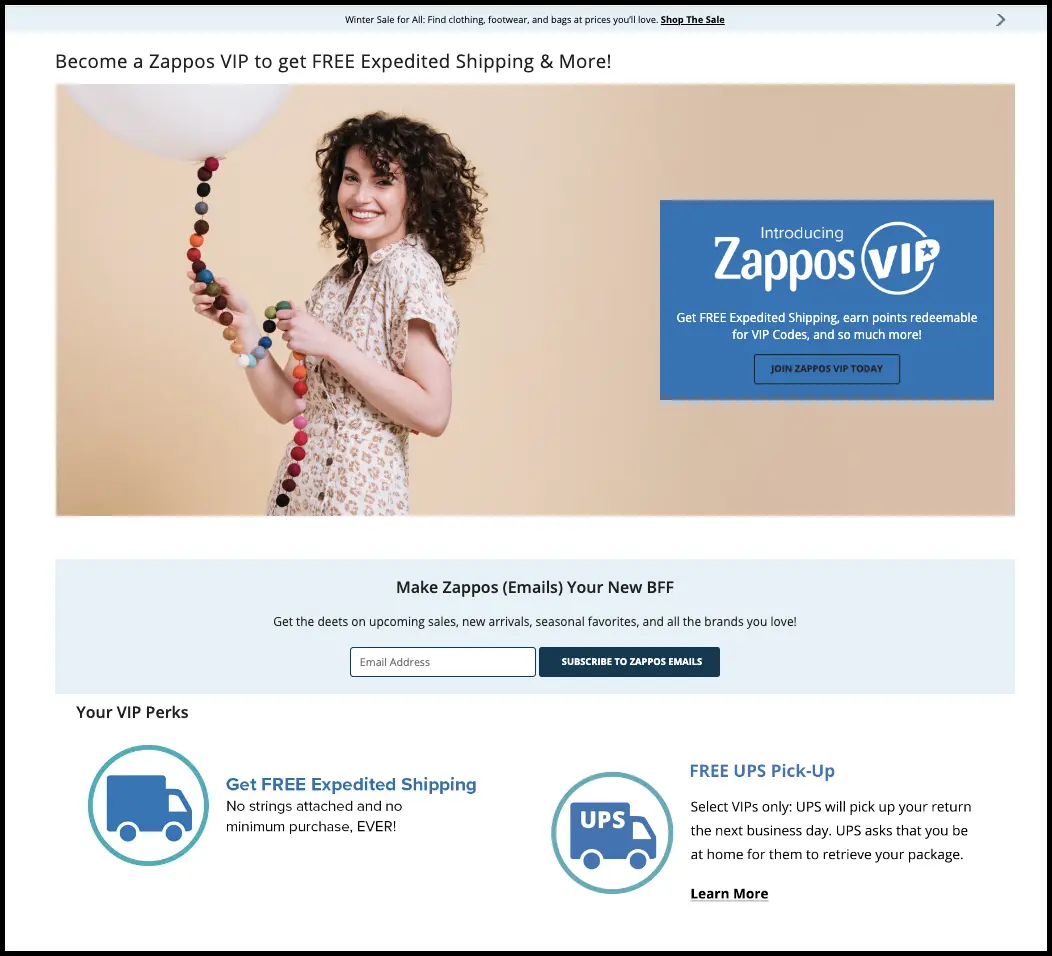
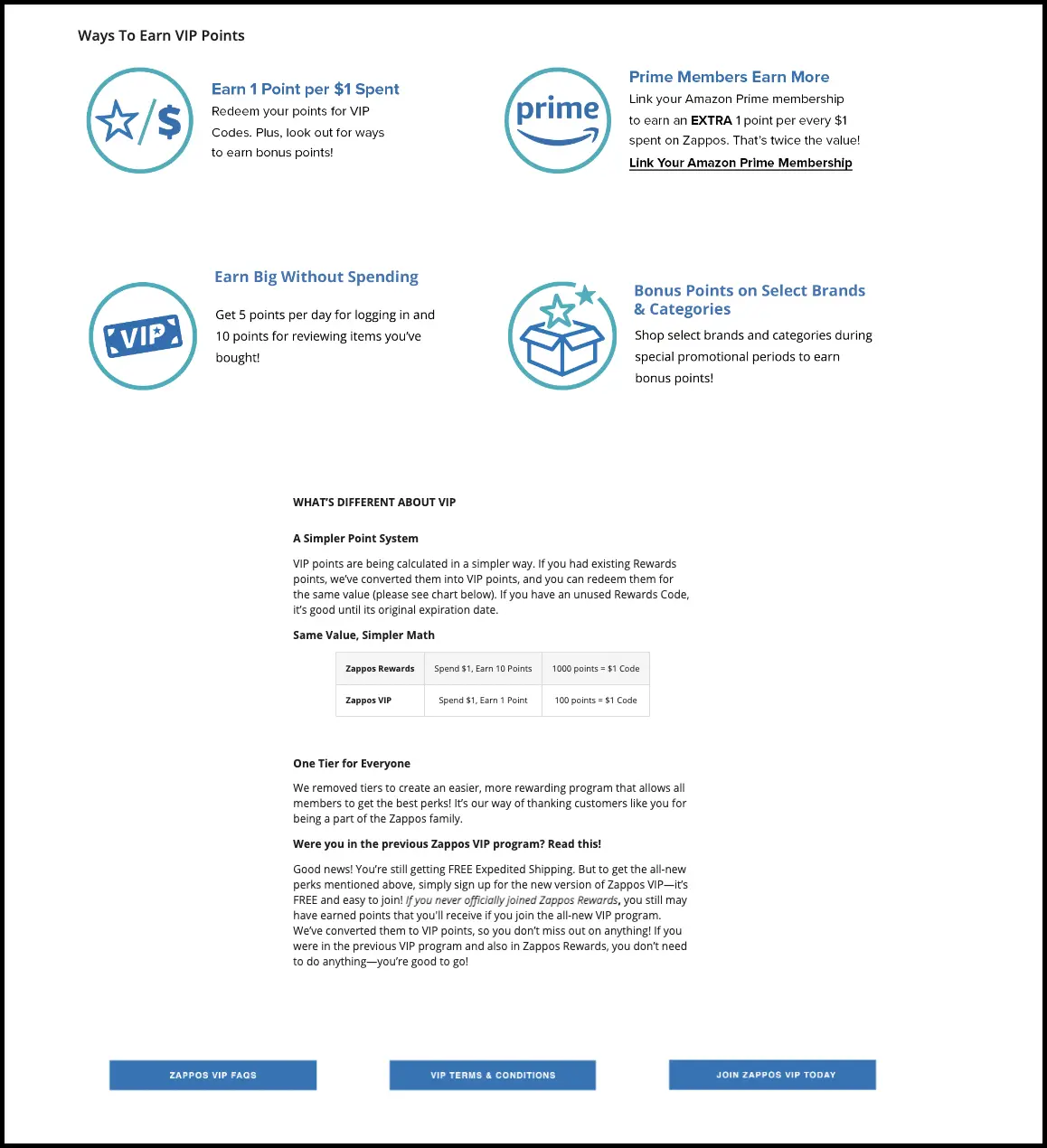
What’s unique about this rewards program is that the members can earn points by being a part of promotional activities like: writing product reviews, linking Amazon Prime membership to Zappos, and so forth.
Zappos has removed the membership tiers to make the loyalty program accessible such that all members are equal and receive the same benefits.
Action item: The three metrics you could measure for customer lifecycle analysis at the advocacy stage are: LTV, engagement rate, and repeat purchase rate.
Read more: Top customer engagement KPIs for Ecommerce businesses.
Use customer lifecycle marketing to increase brand loyalty
Now that you’ve seen the examples of the customer lifecycle and what sets them apart, it must be clear that managing customer lifecycle is how brands can turn first-time customers into loyal and active customers. Now, more than ever, people want to build connections with brands and this is how brands do so. By consistently providing value across customer lifecycle marketing journeys, you become so much more than a store where they bought something.
You may also like
Essential resources for your success
